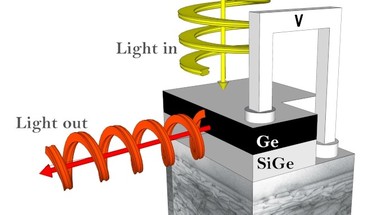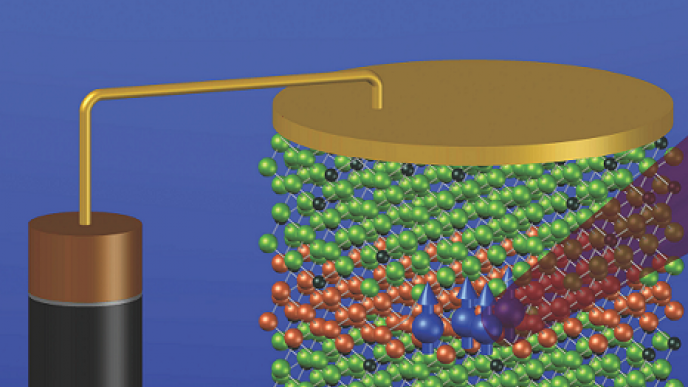
The ability to manipulate the spin degree of freedom in semiconductors is of fundamental importance to the fields of spintronics and quantum technologies. In particular, the electrical control of carrier spin dynamics is the focus of intense research by the international community aimed at the realization of electronic devices that are faster and have lower power consumption than current ones. The Rashba effect is a spin-orbit interaction-dependent physical mechanism that allows for the exploration of spin-charge conversion processes in systems based on materials such as germanium. These are of great interest because of their compatibility with modern industrial fabrication techniques for integrated circuits.
A fully optical study of the physics of the Rashba effect in Ge/Si0.15Ge0.85 quantum wells embedded in electronic devices is shown in a paper presented in Advanced Optical Materials. Time- and polarization-resolved optical spectroscopy measurements allowed to define the spin orientation and demonstrate that the dynamics depends both on the density of photoexcited carriers and on quantum effects such as the quantum confined Stark effect. This study demonstrates a new technique for manipulating the spin degree of freedom, proposing a novel strategy for engineering spin-orbit interaction by laser radiation thus paving the way for electro-optical spin manipulation in future quantum devices.
The work was carried out at the Department of Materials Science of the University of Milano-Bicocca, as described in the article "Optical Manipulation of the Rashba Effect in Germanium Quantum Wells," recently published in Advanced Optical Materials (Impact factor 10.050). The experimental analysis was carried out by a team from the Department of Materials Science led by Prof. Fabio Pezzoli, in collaboration with the groups of Prof. Giovanni Isella of the Politecnico di Milano and Prof. Xavier Marie of the Institut National des Sciences Appliquées in Toulouse.
